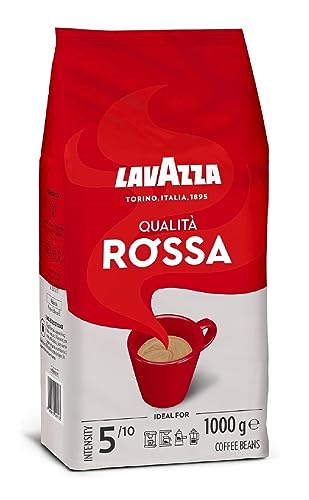"A Guide To Coffee Beans Coffee In 2023

What Are Coffee Beans?
Coffee beans are the seeds of a cherry-like fruit or plant. They grow best at altitudes and in climates similar to the ones where they are cultivated. They also require specific amounts and compositions of soil, water and other factors.
They are not only delicious however, they also have numerous health benefits. Coffee is rich in amino acids trigonelline, which upon roasting transforms into nicotinic Acid (a water-soluble B vitamin). It is also rich in the phenolic acids like chlorogenic acids that aid in reducing blood sugar levels.
Origin
Everyone knows what a roast coffee bean looks like but most people don't know that it begins as the fruit of a berry. A coffee bean is actually a seed that is derived from the fruit of some species of Coffea plants. The berries usually split open and contain two beans, however in about 5percent of all collected beans one bean does not split. This type of bean is called a "peaberry" and is usually manually sorted and sold separately.
The "Bean Belt" is an area of the world situated between the Tropics of Capricorn and Cancer, is where the majority of coffee is produced. Most countries produce coffee using a variety of techniques, each of which has its own distinct flavor and distinctive characteristics.
The exact origin of coffee is a subject of dispute but it is widely believed that the first coffee plants were indigenous to Abyssinia today, which is Ethiopia. The most famous story tells of a goatherd, Kaldi who noticed his goats exuberant and bleating after eating the bright red berries growing on nearby trees. Kaldi tried the berries and felt a feeling of exhilaration. Kaldi then introduced the drink and its benefits to others within his circle and the popularity of the drink grew. In the 15th and 16th centuries, it became popular throughout the Islamic world, despite the fact that Islamic authorities declared it to be intoxicating. an.

Flavor
The flavor of coffee beans is influenced by the area the species, farming methods and roasting process. Different flavors can be achieved by changing the temperature, duration, and the pressure of roasting and also the amount of air flow while it is roasting.
The kind of syrup used to flavor coffee beans may influence the taste. After roasting the beans, they are coated with oil-based flavoring agents and then allowed to sit for 30 minutes. This allows beans to absorb oils. The beans that have been flavored are then classified and sorted.
Addition of flavor to coffee beans allows you to alter the taste of your coffee without altering the texture or color. The flavor of coffee with flavored flavors is often stronger than that of regular unflavored coffee. This is because the flavored coffee beans are soaked in flavoring syrup.
The flavor of coffee can also be affected by the different spices that are added to it during storage. Whole spices like cinnamon sticks, vanilla and cocoa beans can be combined with freshly made coffee beans in order to give the beans a distinctive flavor. This is especially efficient if the beans are stored in a airtight container.
Health Benefits
Coffee beans are believed to have many health benefits. These benefits include reducing your chance of developing Alzheimer's, the disease that causes Parkinson's and liver damage. Caffeine found in coffee beans is believed to boost memory and cognitive performance. Coffee also contains a range of antioxidants that fight free radicals' effects. Chlorogenic acid found in coffee is believed to be a key ingredient in preventing chronic diseases such as heart diseases and diabetes.
Consuming coffee beans has been associated with a lower risk of developing type 2 diabetes. Researchers have also discovered that coffee beans may reduce the risk of developing Parkinson's disease liver disease, Parkinson's disease, as well as cancers in the colon and colorectal systems. coffeee.uk is linked to increased brain function, and it could help to prevent depression. According to a variety of studies the presence of a specific acid in coffee can increase levels of serotonin and dopamine.
While eating raw coffee beans is a good option for most people but it should not be considered as a substitute to healthy diet and exercise. The caffeine effect should not be over-exercised, as it can cause anxiety, jitters, or insomnia. If you have acid reflux or have a sensitive stomach it is recommended to avoid coffee beans.
Preparation
The coffee plant produces two seeds (or bean) which are laid in a flat fashion against each other. Each fruit has an outer skin, called the exocarp, as well as a thin layer of pulp, called the mesocarp on top. The coffee seeds are sucked from their covers, separated and cleaned prior to roasting. The beans can be processed in three distinct ways: dry, moist, or a hybrid known as wet-processed. The beans are then roasted, and once done they are then ground or even whole.
The variety of coffee bean varieties offer different flavor profiles to complement a variety of drinks desserts, desserts, and food recipes. The ideal choice for a recipe is determined by the flavor and texture you want to achieve.
The coffee bean is covered with a wax layer that is intact when it's complete. The layer protects the flavor and aroma compounds of the coffee from the air. After grinding these compounds are exposed and lose their flavor with time. The temperature of the water is essential in brewing coffee to retain and preserve the flavors. Pouring at a lower temp will extract fewer of the nascent flavors, whereas an elevated temperature releases more. This is why it's essential to ensure that you are brewing your coffee at an appropriate temperature for your preferences. If you don't, the taste can quickly turn bitter and sweet.
